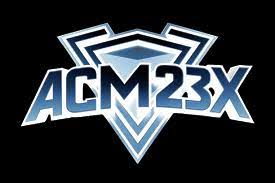In an increasingly interconnected world, the desire to explore personal ancestry and uncover family roots has never been stronger. Genealogy, the study of family lineage, has grown from a niche interest into a global phenomenon, largely thanks to advances in DNA testing and online tools. One such tool that has transformed the genealogical landscape is GEDmatch, a platform where users can upload their DNA results to find genetic matches and better understand their heritage. For individuals with ties to Spain, GEDmatch offers a unique opportunity to uncover connections and explore their genetic ancestry in greater depth.
This article delves into the potential uses of GEDmatch for those with Spanish ancestry, with a specific focus on the GEDmatch kit 999915, which may represent a specific project or dataset that provides insights into Spain’s genetic diversity. We will also explore Spain’s rich genetic heritage, the tools available on GEDmatch, and the potential discoveries awaiting those who choose to explore their genealogical roots.
Spain’s Genetic Landscape: A Tapestry of Histories
To understand the significance of using GEDmatch to explore Spanish ancestry, it is essential to appreciate Spain’s unique genetic makeup. Spain’s history is a complex tapestry woven from the influence of numerous peoples, each contributing to the country’s genetic diversity. The Iberian Peninsula, where modern Spain is located, has been home to various civilizations over millennia, and these populations left lasting imprints on the DNA of modern Spaniards.
Ancient Influences
The earliest inhabitants of the Iberian Peninsula date back to prehistoric times, with evidence of early Homo sapiens settlements. Over time, various groups like the Celts, Phoenicians, and Carthaginians settled in Spain. However, the Roman conquest of the Iberian Peninsula in the 3rd century BCE had a profound impact on the genetic landscape, as the Romans colonized the area and intermingled with the local populations.
The Visigoths and the Moors
Following the fall of the Roman Empire, Spain saw an influx of Germanic tribes, notably the Visigoths, whose rule lasted from the 5th to the 8th century. This period was followed by the arrival of the Moors, Muslim rulers from North Africa who controlled much of the Iberian Peninsula for nearly 800 years. The Moorish influence left an indelible mark on the region’s culture, architecture, and, of course, its genetics.
Reconquista and Modern Spain
The Reconquista, a centuries-long effort to reclaim Spain from Muslim rule, culminated in 1492 when Ferdinand and Isabella unified Spain under Catholic monarchs. This period saw the expulsion of Jews and Muslims, but not without these populations leaving genetic traces in the modern Spanish genome. Today, Spain’s genetic makeup reflects its historical interactions with a variety of peoples, resulting in a unique blend of Mediterranean, North African, and European influences.
Using GEDmatch for Spanish Genealogy
For those with Spanish ancestry, using a tool like GEDmatch can unlock the mysteries of their family history. GEDmatch allows users to upload DNA data from commercial testing companies like AncestryDNA, 23andMe, or MyHeritage and compare it to others in the database. By doing so, users can uncover genetic matches with individuals around the world and explore shared ancestry.
How GEDmatch Works
Once you have your DNA results, uploading the data to GEDmatch is straightforward. The platform then provides access to a variety of tools, including a chromosome browser, admixture calculators, and the ability to compare your DNA with specific reference populations. For those interested in Spanish genealogy, this can be particularly enlightening, as GEDmatch includes datasets that are designed to help users identify connections to Iberian and Mediterranean populations.
Understanding Kit 999915: A Gateway to Spanish Ancestry
The mention of GEDmatch kit 999915 likely refers to a specific DNA kit or dataset, possibly related to Spanish ancestry. If this kit is public or part of a larger project, it could represent a valuable resource for those seeking to connect with their Spanish roots. Public kits are often uploaded by individuals who have strong ties to a particular region or ancestry group, and they provide a valuable point of comparison for others.
Using Public Kits on GEDmatch
Public kits like 999915 can serve as reference points when analyzing your DNA. By comparing your genetic data to a public kit, you can get a sense of how closely your DNA matches individuals from a specific geographic region or ethnic group. For example, if kit 999915 is tied to a specific region of Spain, users can use it to identify potential connections to that area. This can be particularly useful for individuals whose ancestors may have migrated from Spain to other parts of the world, such as Latin America or the United States.
Case Studies: Tracing Spanish Ancestry with GEDmatch
Many individuals of Spanish descent have successfully used GEDmatch to trace their family history and make meaningful connections with distant relatives. One such case is that of Maria, a woman living in the United States with a long-standing curiosity about her Spanish roots. After uploading her DNA to GEDmatch, Maria discovered a match with a distant cousin living in Andalusia, Spain. This connection not only helped her fill in gaps in her family tree but also allowed her to learn more about the region her ancestors came from.
Similarly, David, an Australian with Spanish ancestry on his maternal side, used GEDmatch to identify common ancestors with individuals living in Mexico, a country with a significant population of people with Spanish heritage. By connecting with his DNA matches, David was able to trace his lineage back to a specific village in northern Spain, further deepening his understanding of his family’s origins.
Ethical Considerations of Genetic Genealogy
While GEDmatch and other DNA testing tools offer exciting possibilities for genealogical research, it is essential to approach this technology with a sense of responsibility and awareness. Sharing DNA data on public platforms comes with potential privacy concerns, as genetic information is deeply personal. Users should be mindful of the privacy settings on GEDmatch and other platforms, ensuring they understand the implications of making their data available for public comparison.
Additionally, genetic genealogy can sometimes reveal unexpected or even unwelcome discoveries, such as previously unknown relatives or family secrets. While these revelations can be intriguing, they may also have emotional or social ramifications that require careful consideration.
Conclusion
Spain’s genetic landscape is as diverse and rich as its history, making it an exciting area of study for genealogists and family historians. GEDmatch, with its powerful DNA analysis tools and public datasets like kit 999915, offers individuals of Spanish descent the opportunity to delve deeper into their ancestral roots and connect with others who share their heritage. Whether you are tracing your family back to a specific region of Spain or exploring your connections to the broader Mediterranean world, GEDmatch provides an invaluable resource for uncovering the genetic ties that bind us.
By embracing these tools, we can gain a better understanding of our personal histories, forge new connections, and celebrate the diverse origins that shape our identities today.


